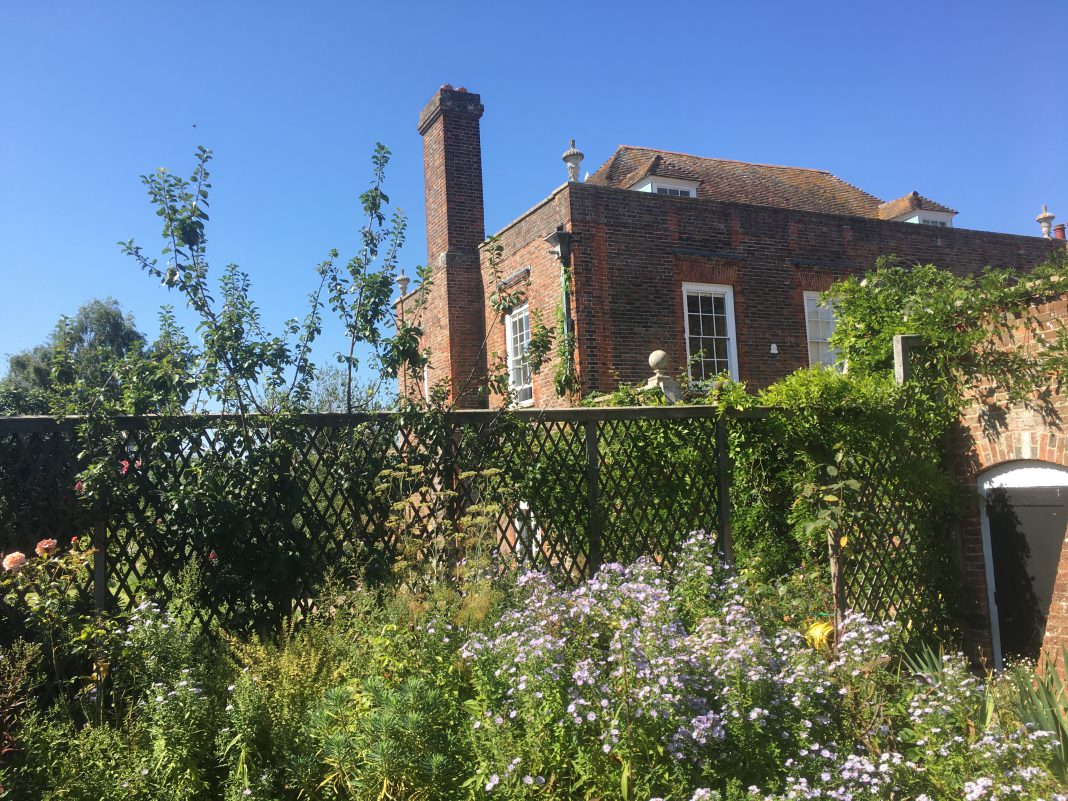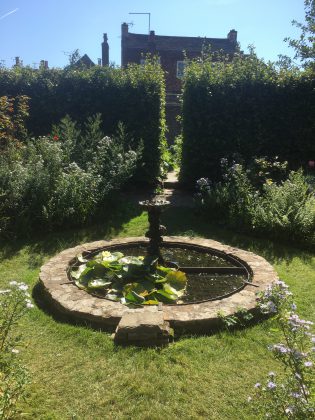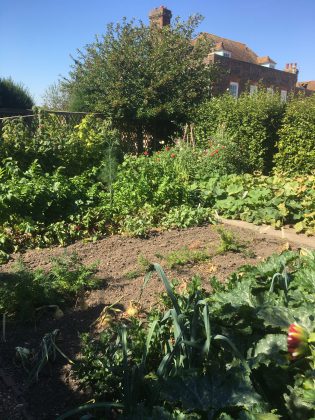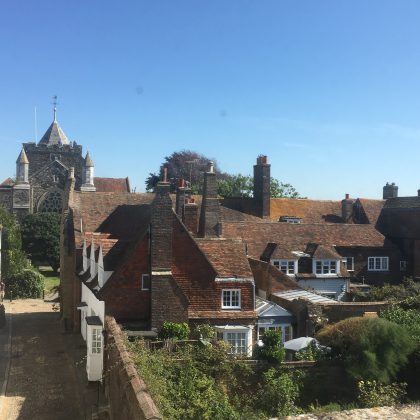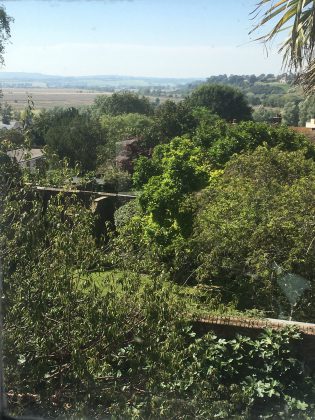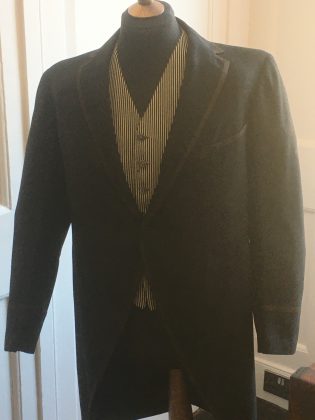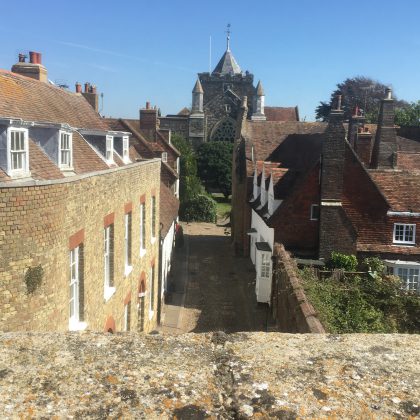So where will you find these gentlemen? Lamb House, a National Trust property in Rye would be a good place to start.
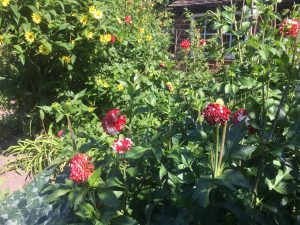
Lamb House, built in 1722 by James Lamb, a wealthy wine merchant and much involved in local politics, is at the top of West Street in the centre of Rye. It was handed to the National Trust in the 1950s by the heirs of the last owner, Henry James, the American author and playwright. EF Benson of Mapp and Lucia fame rented the property from 1919 to the time of his death in 1940 and the house continued to have tenants with literary associations until the last one left and the property was taken over completely by the Trust as a visitor venue.
For those of you unfamiliar with the house, it is a beautiful Georgian building, and has been renovated and refurbished upstairs and down. Its garden, in the centre of Rye as it is, has also been given a thorough makeover in the period of closure due to the pandemic lockdown. It really does look wonderful and the vegetable garden is now in full working order!
House and garden
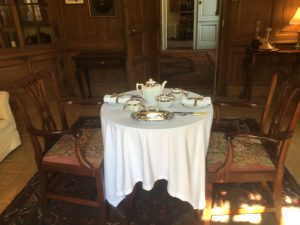
I was shown round by the collections and house officer, Danial Demaine, who took great trouble to give a thorough house tour, and showed a wealth of knowledge in displaying both the house and gardens. He also took time to find the quotes in this article. it was a pleasure to see the way the house has been set up, to include references to EF Benson, not only to Henry James.
The tea table had been set up in the oak parlour, through which the novelist Edith Wharton, a close friend of Henry James “wandered on to the thin worn turf of the garden …… the gables of Watchbell Street peeping like village gossips over the creeper clad walls”
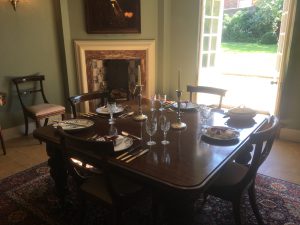
From Edith Wharton’s autobiography A Backward Glance (1934) when she and James had tea: “A parlourmaid appeared with a tea tray and I was led up the rickety outside steps to the garden room.” Sadly, the garden room is no longer there, being bombed in the second world war, but the oak parlour is a worthy substitute. Further along the hall corridor, the dining room table had been set for dinner and looked as though someone was about to step in for lunch through the garden door.
Upstairs three rooms are open and all have been reset during lockdown. The bedroom has particularly been improved, with repositioning of the bed and some more furniture. The little dressing room now has a morning coat outfit that belonged to James to give it more purpose.
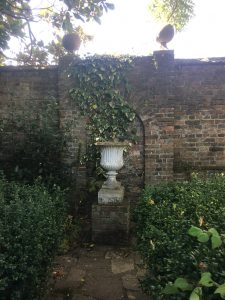
The garden has been tidied and the paths have been opened out, so the entrance to the secret garden, now closed as part of another property, can be seen. This is where EF Benson and the then vicar of Rye were sitting facing into the Lamb House garden, when they saw “…the figure of a man walk past this open doorway… the glimpse I got of him was very short, for two steps took him past the open doorway… there, beyond, the garden lay basking in sun and empty of any human presence” (Taken from Final Edition Informal Autobiography by EF Benson, 1940)
Future plans and a new appointment
So, what are the plans for this gem in the centre of the town and at present not very well connected with the community in which it sits? The National Trust have appointed a new volunteering experience officer, Gill Marsden, who has only been in post nine weeks, but took the time to tell me of the hopes and opportunities presenting themselves to link the house and garden once again with its setting in the town centre. Gill is covering what is known to the National Trust as the “Sissinghurst portfolio”, that is, Sissinghurst, Lamb House, Smallhythe Place and Stoneacre.
Gill’s aim is to engage with the local community and provide a focus for the many attributes of Lamb House, for the wellbeing of as many as possible, both in volunteering and the possibilities for the use of the house and garden. Obviously, within the capacity of the overall property, there are opportunities for gardening itself, readings or other creative activities. The garden is an oasis of calm and tranquillity, and opportunities for volunteers to work in it are now open, so why not get in touch? Gill needs lots of contacts as she is new to this post, so anyone from local groups who would like to talk to her is very welcome to do so. The Rye Arts Festival comes to mind, for example, as a venue for the books or talks programme next year. Young people can also volunteer and learn about their local history for school projects, so there may be links there.
Volunteering
Lamb House needs two volunteers a day to keep it open for five days a week, Friday to Tuesday. Gill has been shadowing and meeting volunteers throughout the properties listed, to learn about their experiences and reasons for volunteering. There is no one “model” of volunteering, ideas are welcome on new ways of working and it doesn’t have to be a regular commitment. Feel able to contact Lamb House, pop into the Butler’s House ticket office annexe to speak to Danial, or ring or email.
Covid-19 precautions
Like all similar properties, Lamb House was closed for a long period during the Covid-19 lockdowns, but is now open, both floors but not the café. It is looking at its very best at the moment and the garden is a particular delight. Each room has been made as Covid-19 safe as possible, with space for four people at any one time, and regular cleaning. The ticket office is in the annexe, which gives additional space in the front hall. Masks are worn by staff and volunteers and visitors are asked to do so as well, within the requirements of the regulations. So, there is no need to be especially concerned about the pandemic here.
Contacts
Lamb House website: nationaltrust.org.uk, telephone: 01797 222909, volunteering experience officer Gill Marsden: gillmarsden@nationaltrust.org.uk
Open Friday to Tuesday, 11am to 5pm. Last entry is 4.30pm. Closing for 2021 season: November 1. Open for Christmas season, check website for details.
Image Credits: Gillian Roder .



